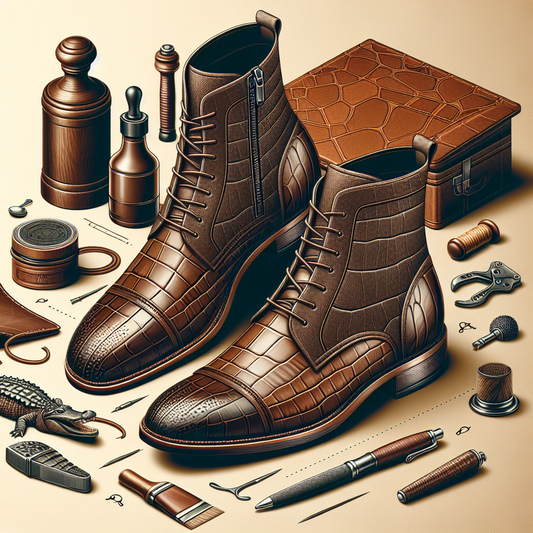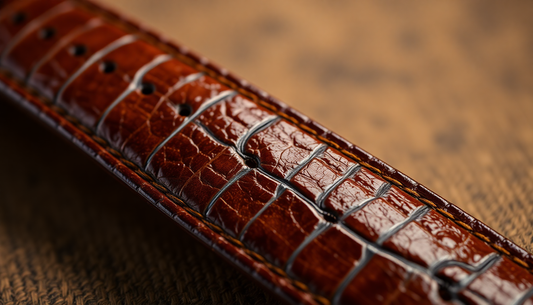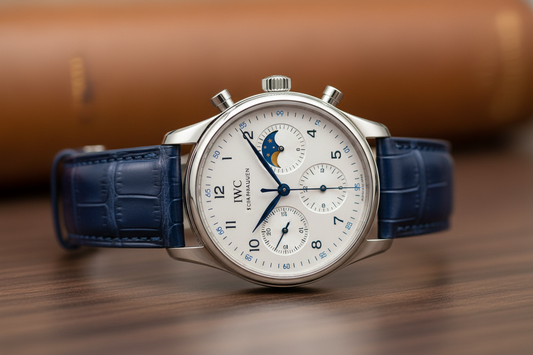The Frustrating Phenomenon of Peeling Leather: Why Your Shoes Are Falling Apart
Have you ever pulled out a beloved pair of leather shoes from storage only to find the leather cracked, peeling, or even crumbling? It's a common issue that can be disheartening for any shoe enthusiast, especially when dealing with expensive footwear like **ostrich skin boots** or **crocodile skin boots**. This peeling phenomenon isn't always a sign of poor quality. It often stems from a combination of factors that can be mitigated with proper care and storage techniques.
Delving into the Science of Leather Degradation
Leather, a natural material derived from animal hides, is inherently susceptible to deterioration over time. Understanding the factors that contribute to this degradation is crucial for preventing peeling and preserving your shoes. Here's a closer look at the science behind it:
- **Moisture Fluctuations:** Leather is highly sensitive to humidity. When exposed to fluctuating moisture levels, the leather expands and contracts, putting stress on the material. This is particularly problematic if your shoes are stored in humid environments, subjected to temperature changes, or even left in damp conditions after wear. Imagine a leather shoe being repeatedly subjected to the dry heat of a summer day followed by the dampness of a rainy evening. This constant fluctuation causes the leather to become brittle and prone to cracking.
- **Exposure to Sunlight and UV Rays:** Ultraviolet (UV) radiation from sunlight can wreak havoc on leather fibers. This exposure leads to discoloration, fading, cracking, and ultimately, peeling. UV rays weaken the structure of the leather, leaving it vulnerable to damage. Think of leaving your leather shoes in the sun for extended periods, especially during the harsh summer months. The sun's rays, with their powerful UV radiation, will act like a slow-acting poison on the leather, slowly degrading its fibers and leaving it susceptible to cracking and peeling.
- **Improper Storage:** Storing your leather shoes improperly can accelerate their decline. Airtight containers or plastic bags trap moisture, creating an environment ripe for mold and mildew growth, which can severely damage the leather. Leather requires ventilation to breathe and maintain a healthy condition. Leaving your shoes in plastic bags or sealed containers for extended periods can create a breeding ground for bacteria and mold, leading to discoloration, unpleasant odors, and even peeling.
- **Natural Aging:** Even with proper care, leather will inevitably age over time. This natural aging process involves the gradual breakdown of collagen fibers, which contribute to the strength and flexibility of the leather. While natural aging is an unavoidable process, it can be slowed down significantly by proper storage and maintenance. Just as our skin naturally ages and wrinkles over time, leather also undergoes a natural aging process. While this is inevitable, proper care and storage can significantly slow down the process and prevent premature deterioration of the leather.
Preventing Peeling and Preserving Leather Shoes: A Comprehensive Guide
Now that we understand the culprits behind peeling leather, let's delve into the proactive steps you can take to preserve your beloved footwear:
1. Proper Storage: The Cornerstone of Leather Care
- **Shoe Trees:** Invest in quality shoe trees. These wooden or plastic inserts maintain the shape of your shoes, preventing wrinkles, creases, and distortion that can weaken the leather. Shoe trees act as internal supports, preventing the leather from collapsing and creating stress points that can lead to cracking and peeling.
- **Breathable Storage:** Store your shoes in breathable dust bags or shoe boxes, ensuring adequate ventilation. These materials allow air circulation, preventing moisture buildup and mold growth. Choose dust bags or shoe boxes made from breathable materials, such as cotton or linen, instead of plastic bags or airtight containers. This allows air to circulate around your shoes, preventing moisture buildup and the development of mold, which can damage the leather.
- **Cool, Dry, and Dark Environment:** Opt for a cool, dry, and dark storage space. Avoid storing shoes in direct sunlight, humid areas, or near sources of heat. Ideal storage conditions for leather shoes mimic a cool, dry, and dimly lit environment. Avoid storing them in direct sunlight, humid basements, or near heat sources like radiators or fireplaces. These factors can accelerate the deterioration process and lead to peeling.
2. Regular Cleaning and Conditioning: A Vital Ritual
- **Gentle Cleaning:** Regularly clean your leather shoes with a soft brush to remove dust, dirt, and debris. Avoid harsh chemicals or abrasive cleaning agents that can damage the leather's natural oils. A soft-bristled brush is your best friend when it comes to cleaning leather shoes. Gently brush away dust, dirt, and debris, taking care not to scrub too hard, as this can damage the leather. Avoid using harsh chemicals or abrasive cleaners that can strip the leather of its natural oils, leaving it dry and brittle.
- **Leather Conditioner:** Conditioning is crucial for maintaining the moisture balance of leather. Apply a high-quality leather conditioner every 2-3 months to replenish oils, prevent drying, and keep the leather supple and flexible. Leather conditioners act like moisturizers for leather. They help replenish the natural oils that the leather loses over time due to wear and tear, exposure to the elements, and natural aging. Regularly conditioning your shoes will keep the leather hydrated, flexible, and less prone to cracking and peeling.
3. Waterproofing: Shielding Your Shoes from the Elements
- **Leather Sealant:** Apply a good quality leather sealant or water-resistant spray to create a protective barrier against moisture and stains. This will help prevent water from penetrating the leather, minimizing the risk of damage and peeling. A leather sealant acts like a protective layer, shielding the leather from water, moisture, and stains. This is particularly important for shoes that are exposed to the elements, such as rain, snow, or mud. It helps prevent the leather from absorbing moisture and becoming brittle, reducing the risk of cracking and peeling.
- **Follow Manufacturer Instructions:** Always follow the manufacturer's instructions for the specific waterproofing product you choose. Some sealants require multiple applications or have drying times to ensure optimal protection. It's essential to read and follow the manufacturer's instructions for the specific sealant you choose. Different products may require varying drying times or multiple applications for optimal protection.
Special Considerations for Exotic Leathers: A Higher Level of Care
Exotic leathers like **ostrich skin boots** and **crocodile skin boots** require a more meticulous approach to care and maintenance. These leathers are often more delicate and sensitive to moisture than standard leather types. Their unique textures and patterns make them luxurious and eye-catching, but they also require specific care to maintain their beauty and longevity.
- **Specialized Cleaning Products:** Invest in cleaning and conditioning products specifically formulated for exotic leathers. Generic leather care products might not be suitable for the unique characteristics of these materials. Exotic leathers like ostrich and crocodile skin have unique properties and require specialized cleaning and conditioning products. Using generic leather care products might not be suitable for these delicate leathers and could even damage them.
- **Expert Consultation:** For valuable exotic leather footwear, consider consulting a professional shoe care expert or a leather specialist for guidance on appropriate cleaning, conditioning, and storage techniques. If you're dealing with expensive exotic leather shoes, it's wise to consult a professional shoe care expert or leather specialist for guidance on the best care practices. They can provide personalized advice on cleaning, conditioning, and storage techniques specifically tailored to your shoes' unique material and construction.
Peeling Leather: Not Always a Lost Cause
While peeling leather can be discouraging, it doesn't always signify the end of your beloved shoes. If the peeling is minor, you can explore leather repair kits to patch the affected areas. These kits often contain adhesive patches, leather filler, and colorants that can help you repair minor cracks and peeling. However, for severe peeling, it's best to seek professional help from a reputable shoe repair service. They can assess the damage and offer the most appropriate solutions for restoration. If the peeling is extensive or the damage is beyond your DIY skills, it's wise to seek the help of a professional shoe repair service. They have the expertise and tools to assess the damage and provide the most effective solutions for restoring your shoes.
Key Takeaways: Embracing Leather Care
Remember, proper storage, regular cleaning, and conditioning are fundamental to preserving the life and beauty of your leather shoes. By understanding the science behind leather degradation and implementing these care practices, you can prevent peeling, extend the lifespan of your footwear, and continue to enjoy the elegance and durability of genuine leather for years to come. After all, a little extra effort in caring for your leather shoes is a small price to pay for the satisfaction of keeping them looking and feeling their best. Investing in a few simple care practices, like using shoe trees, storing them properly, and conditioning them regularly, can significantly prolong the life of your leather shoes, ensuring they remain a stylish and functional part of your wardrobe for years to come.








